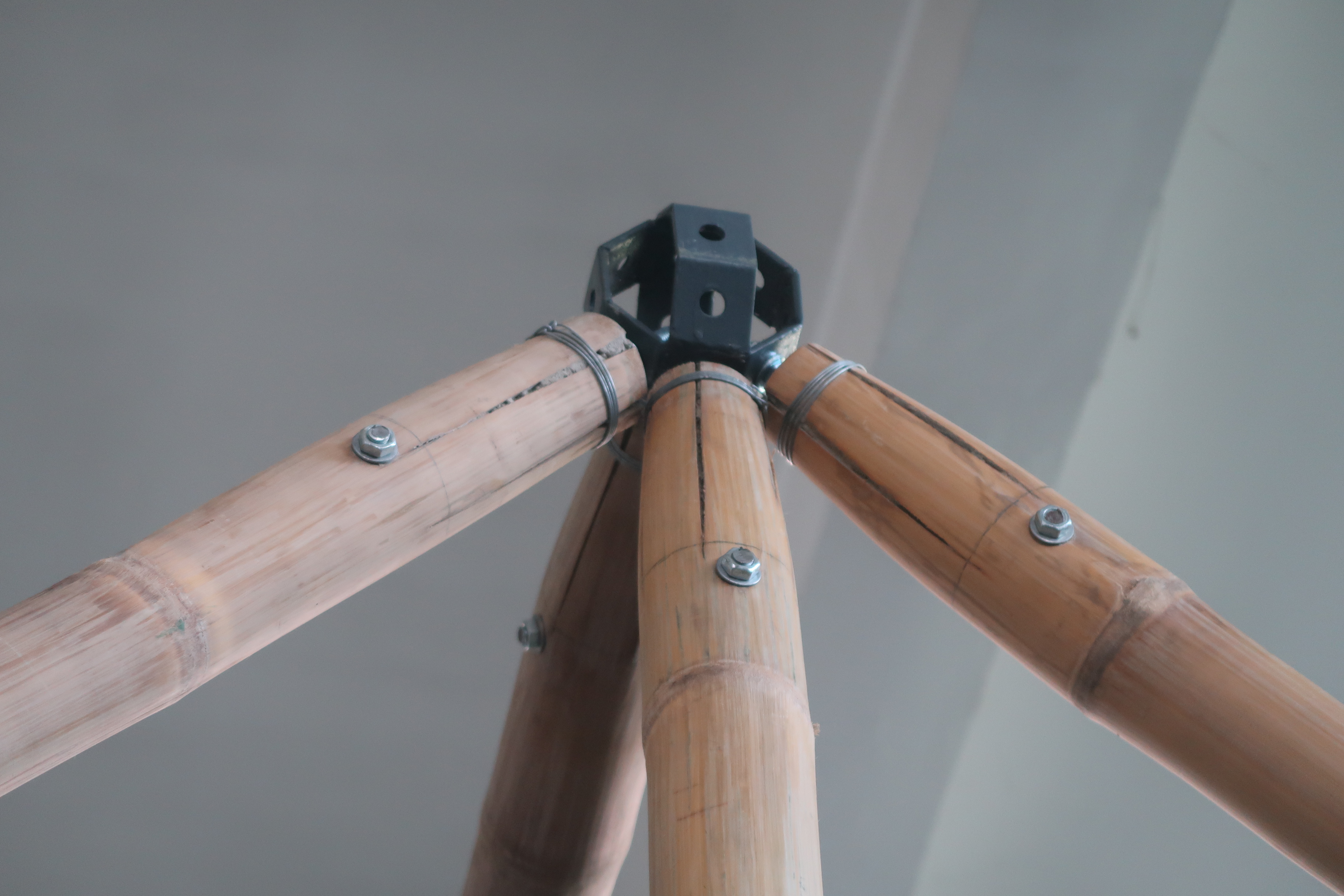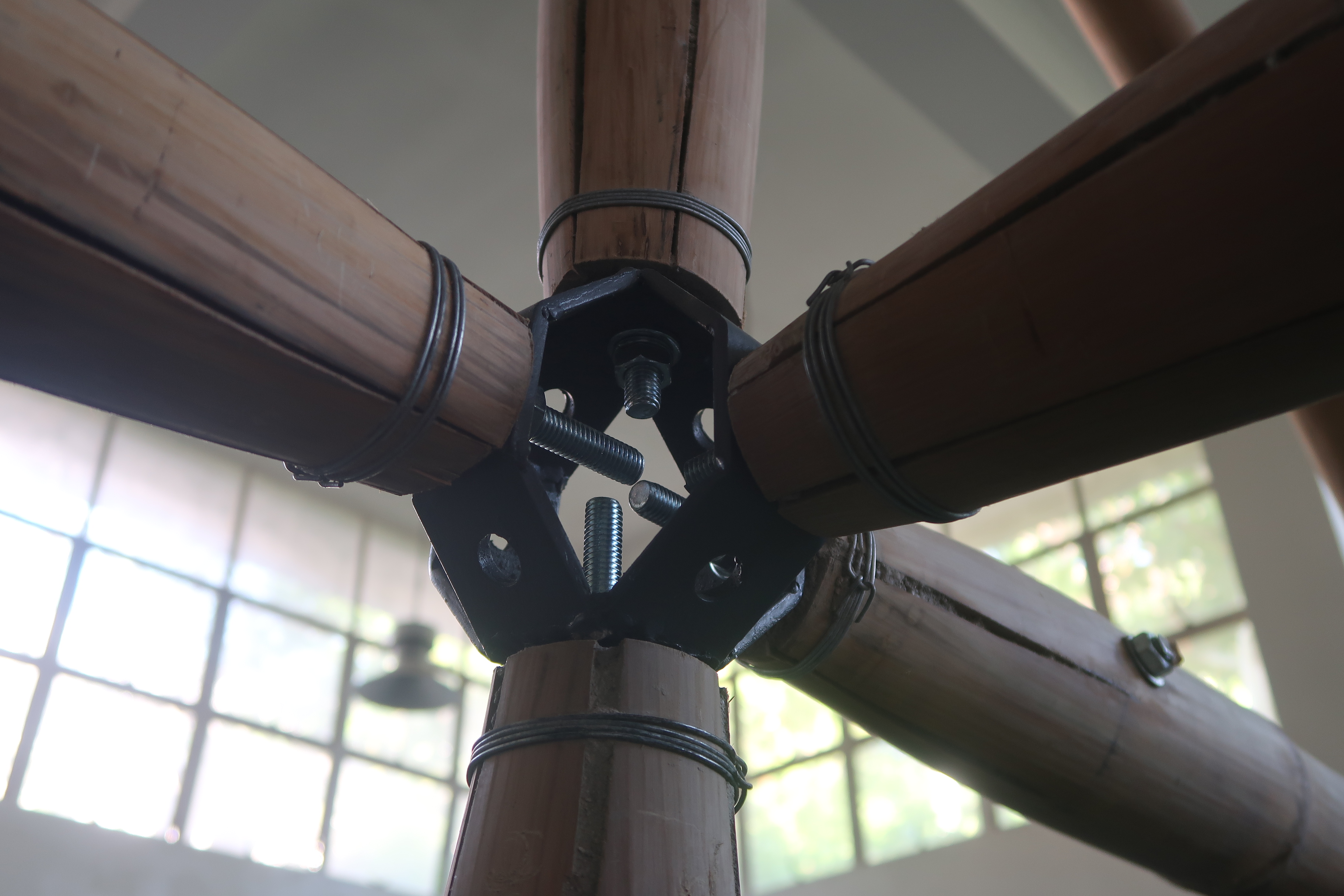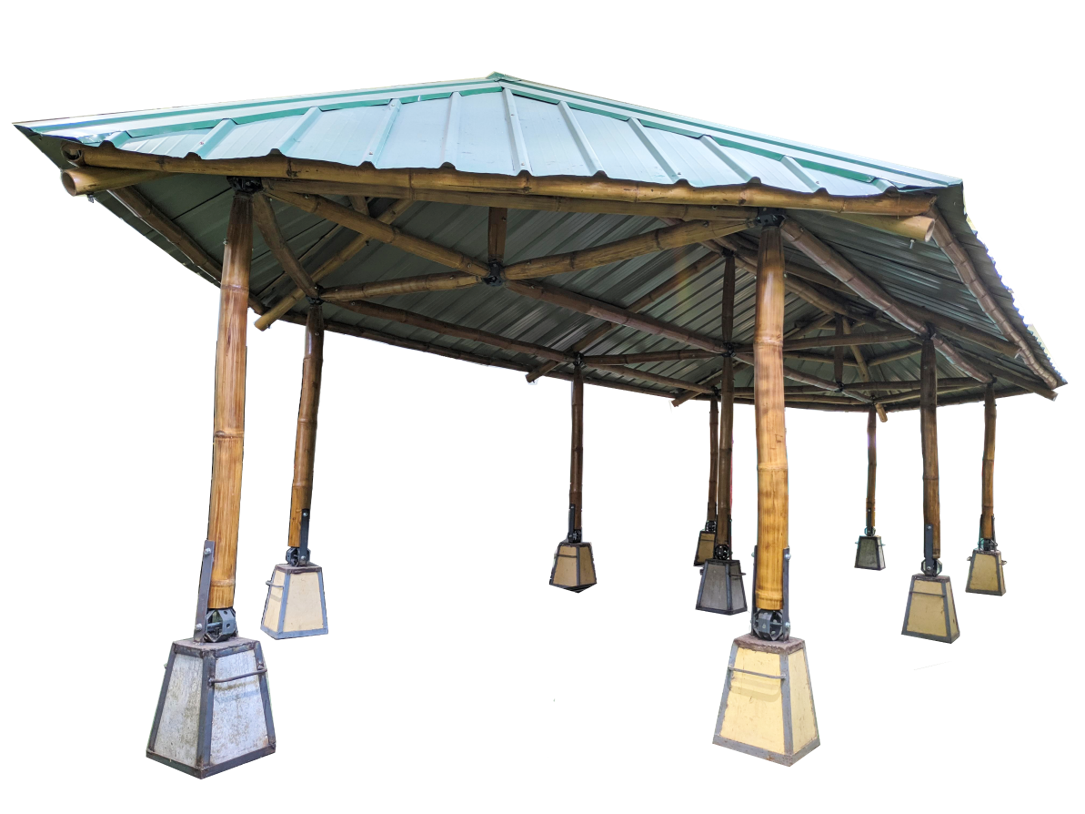

The jointing system makes use of common construction materials.

The connector was found suitable for a lightweight open structure.
Researchers at the Department of Science and Technology - Forest Products Research and Development Institute (DOST-FPRDI) have recently come up with a jointing technique that can help solve one of the biggest problems in building with bamboo. An upgrade of traditional methods, the technique uses common construction materials like cement, steel bars and plates, and bolts and nuts to connect bamboo poles together.
According to DOST-FPRDI’s Engr. Christian Camacho, with further upgrading, the newly developed connector can help promote the widespread use of bamboo as a building material in the Philippines.
“Designing connections is one of the biggest challenges when building with bamboo. Since bamboo is a natural material, each pole is unique in shape and geometry. Traditional joints which usually rely on tying or splicing are prone to slippage and deformation which can weaken the poles and destabilize the entire bamboo structure. As such, we need jointing methods that take into account the unique features of the material to ensure the durability of our bamboo-based constructions,” explained Camacho.
The research team found that the use of cement mortar as in-fill at the bamboo ends provides rigidity to the connection. The joint has a maximum load capacity of 1,700 kilos, equivalent to the combined weight of 27 people.
Likewise, a prototype space frame shows that the connector can be used in an open-type bamboo structure which can serve as a temporary tent, car port, waiting shed, or emergency shelter.
DOST-FPRDI plans to conduct more experiments to improve the new connector and ensure that it can be used in more complex bamboo housing and building projects. ### (Rizalina K. Araral, 7 March 2023)











